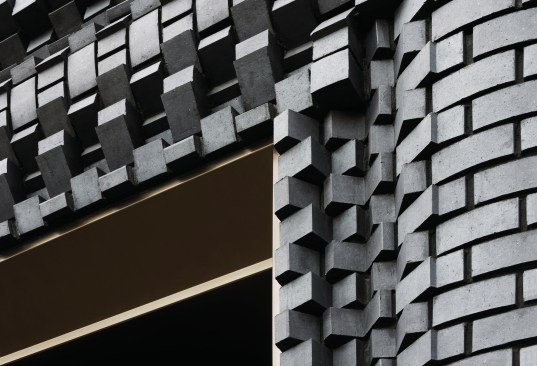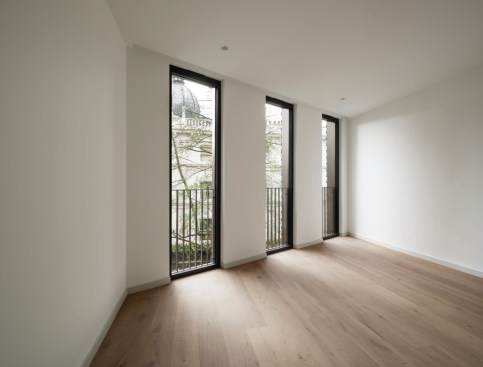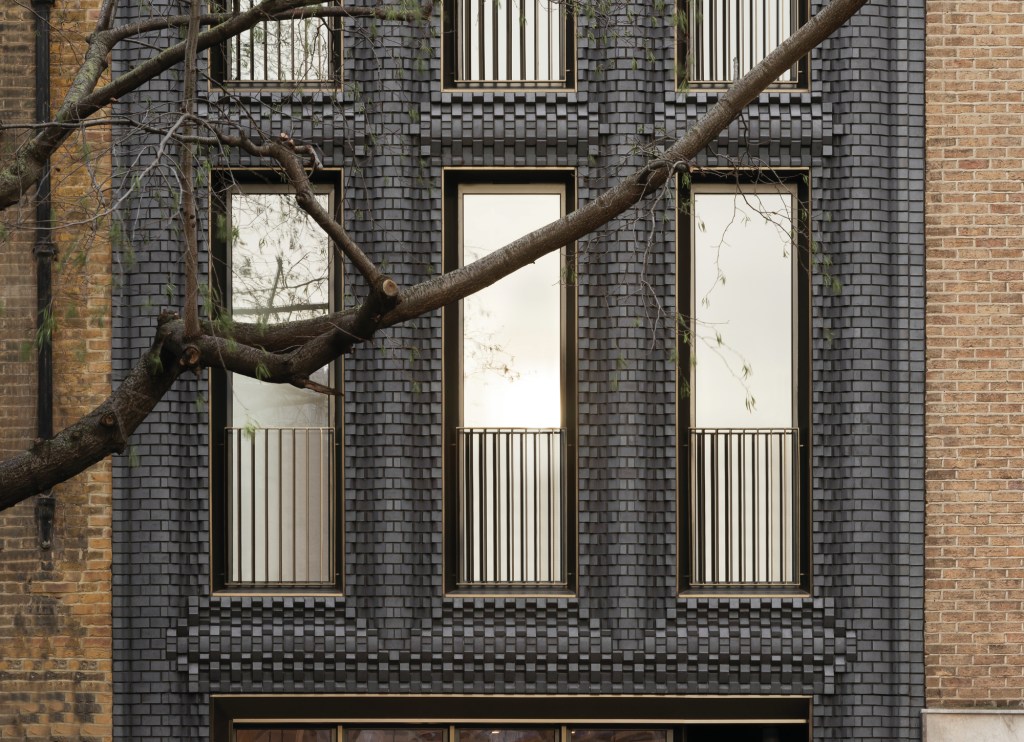For its first built project, developer HHG London has partnered with Bureau de Change Architects to create The Interlock, a five-story mixed-use project in London’s Fitzrovia neighborhood. In response and contrast to the 19th and 20th century brickwork and concrete that defines the rest of Riding House Street, the new structure’s façade features a clay-brick surface that twists and morphs around the edges of its windows.
Each of the façade bricks was individually molded from Staffordshire Blue Clay, chosen to contrast with the look of the area’s existing brickwork. The clay was fired in oxidation in handcrafted steel molds, creating the final matte-blue finish.

The full façade was modeled in 3D before construction, in order to ensure that the design could meet the project’s structural requirements. A total of 5,000 blocks in 44 shapes made up the final landscape, arranged using a series of 188 printed templates that listed the number, typology, and location of each brick.
The five-story building houses three residential units, a street-level café, and a gallery space on the lowest level. The building’s rear is arranged as a series of stacked blocks, with each floor shallower than the last. A series of light wells and skylights are designed to bring daylight into the center and edges of the interior and create internal patios on the lowest floors.

The residential unit design is deliberately simple, with natural stone countertops, oak floors, terrazzo bathrooms, and sprayed-timber kitchens. The café contrasts the complex exterior with monochromatic white surfaces, broken only by wood accents on the floor and counter.
